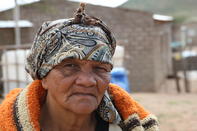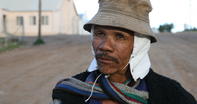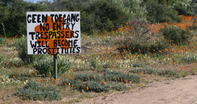Unique and Unforgettable
The landscape of the Richtersveld is unique and unforgettable. Its barren beauty may not be as eager to please as the more obsequious vistas of the western Cape or the Garden Route, but its unmistakable majesty is imprinted in the mind of every visitor.

Thankfully, this precious and precarious ecosystem is now being preserved in a number of conservation areas. The first attempts to formally protect the dramatic mountain desert and its unusual plants began in 1975, when the then-National Parks Board agreed to investigate the establishment of a national park in the northern part of the Richtersveld.
However, this was communal land that couldn’t be bought, transferred or otherwise appropriated. It took nearly 20 years of negotiations with the local council to reach a deal.
Extremely Prejudicial

By 1989, a contract had been drawn up. Then, just as the park was about to be proclaimed, a group from a ‘Community Committee’ lodged an injunction against the whole process. According to them, the council was ‘unrepresentative and autocratic’ and the community had not been given an opportunity to provide their input. In truth, the terms of the original contract were extremely prejudicial against the local people.
The 99 year lease stipulated that all livestock had to be removed from the park, no resources (plants or water) could be utilised and there were no employment guarantees for community members. In other words, the establishment of the park would have entirely excluded the local people from land they had lived on for over 2000 years.
It almost seemed as if the Parks Board wanted to save the land from the locals instead of for the locals.
An Integral Part of the Ecosystem

The signing ceremony was postponed and a series of meetings was held with all parties concerned. During the course of these consultations, the Parks Board came to a new realisation that local populations were an important component of any conservation initiative, in terms of environmental management, ownership and even as visitors.
Furthermore, in the case of the Richtersveld, the indigenous people were actually an integral part of the eco-system and their traditional lifestyle was just as endangered as the rare succulents. A new contract was subsequently drawn up with much more equitable terms.
The lease was reduced to 30 years, the grazing rights of local people were acknowledged (subject to a limitation of 6600 small stock units), access to natural resources within the park was similarly allowed, and a certain number of jobs were reserved for local people.
With this agreement in place, a joint management committee was established to run the park and the contract was signed in July 1991. This was the first contractual national park in South Africa (independently owned land, jointly managed by the Parks Board and the local community).
Later, this model would be used to help solve the thorny issue of land claims in other national parks, such as the Makuleke concession area within the Kruger National Park.
Untrammelled Nature

Anyway, the newly established 162 000 hectare Richtersveld National Park (RNP) was very rugged indeed. The roads were virtually non-existent, the campsites were very basic and the wilderness reigned supreme. For the adventurer who really wanted to get away from it all, it was heaven.
Unfortunately, for a place so disconnected from the modern world, there were some very contemporary complaints from the local community. This mainly revolved around the stipulated registration of herders (only 28 families were allowed into the park at its inception) and the selective appointment of staff members. Today, however, things are much more settled.
The community has come to accept the park on its doorstep. Campsites have attractive ablution facilities. The roads are much improved (although a 4x4 is still recommended).
And there are even several chalets and hutted camps available. This is a cause of distress for old-timers who miss the untamed wildness of the park, but most visitors will be thrilled by the current combination of untrammelled nature and moderate creature comforts.
By David Fleminger